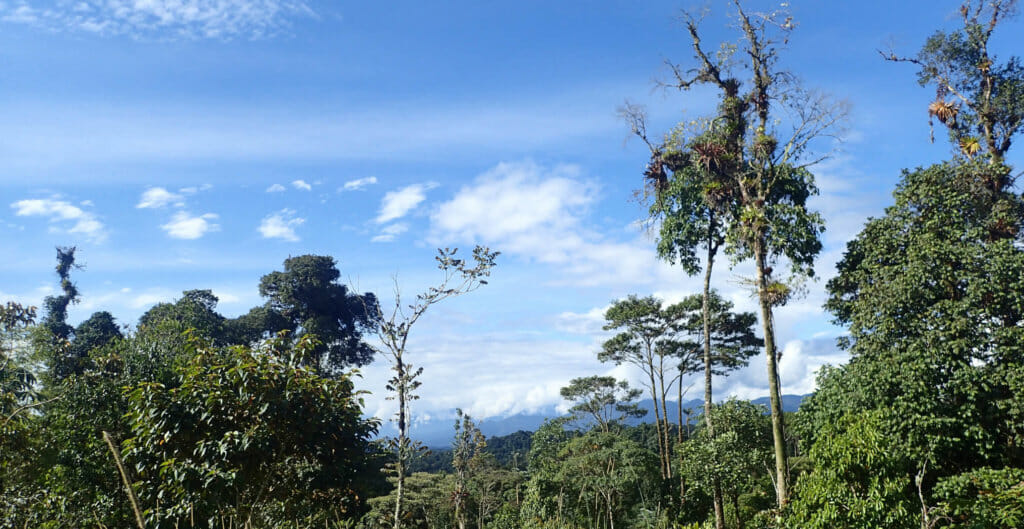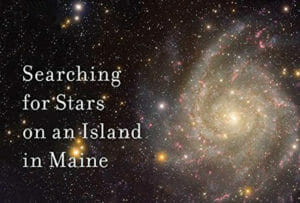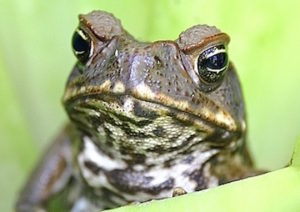Dying Tropical Forests Could Threaten Much of the Earth’s Life
Accelerating climate change is likely to result in growing forest carbon emissions, with serious consequences both for the creatures that find shelter there and the global atmosphere. Tropical forests, like this one in the Ecuadorean Andes, are set to become sources of increasing carbon emissions. (Seuayan ravina / Wikimedia Commons)
Tropical forests, like this one in the Ecuadorean Andes, are set to become sources of increasing carbon emissions. (Seuayan ravina / Wikimedia Commons)
Accelerating climate change is likely to result in growing forest carbon emissions, with serious consequences both for the creatures that find shelter there, and for the global atmosphere.
The world’s great tropical forests – home to most of the world’s wild things, and immense stores of carbon from the atmosphere – could soon start to release more carbon than they absorb, scientists say.
If this happens, probably as a result of exploitation, drought and extremes of heat, then the levels of greenhouse gases in the atmosphere will continue to rise, and with them, atmospheric and oceanic temperatures and the threat of catastrophic climate change, according to a new study.
Edward Mitchard, an earth scientist at the University of Edinburgh in the UK, spells out the challenge in the journal Nature, using scientific language of unusual clarity.
Carbon source
“Tropical forests are in the process of switching from being approximately neutral to being a net source of carbon. This decline is caused by the combination of a decrease in the area of intact forest as well as an increase in temperatures and drought, which reduces the ability of trees to respond to higher CO2 concentrations by growing faster.”
And he writes: “With both forest loss and climate change likely to accelerate over the 21st century, tropical forests are likely to release ever more carbon, which will make limiting global warming to less than 2°C above pre-industrial levels very difficult.”
In 2015, in Paris, 195 nations vowed to contain global warming to a level “well below” 2°C by 2100. In fact, in the first two centuries since humans began using fossil fuels in ever-greater quantities, to release ever higher levels of greenhouse gases, the ratio of carbon dioxide in the atmosphere has risen from around 280 parts per million to more than 400 ppm, and global average temperatures have crept up by almost 1°C already.
So to contain warming to no more than an ambitious 1.5°C humans need not only to switch at speed to renewable energy sources such as wind and solar power, but to preserve and if possible restore the world’s great tropical forests.
These alone perform 60% of all the world’s photosynthesis and capture about 72 billion tonnes of carbon from the atmosphere every year. Since very nearly the same levels of carbon go back into the atmosphere – from plants, fungi, animals and microorganisms in the forests – their preservation is vital.
Fifty years ago biologists expected to be the first to find a species; now they hope not to be the last.
And yet, repeatedly, researchers have warned that their role as carbon absorbers is being eroded by exploitation, clearing, fire, drought and heat.
Preservation of the tropical forests matters for reasons beyond their role as absorbers of atmospheric carbon. The tropics provide food and shelter for 91% of all terrestrial birds; and three-fourths of all amphibians, land mammals, freshwater fish, ants, flowering plants and marine fish.
Detailed economic studies have confirmed, again and again, that the preservation of tropical biodiversity profits all humankind. And an even greater number of studies has confirmed that species loss and extinction is on the increase, and climate change can only accelerate the slaughter of wild things.
But time is running out, warn researchers in a second study in Nature. Just as the great trees of the forest fall to human exploitation, drought and heat, so do the millions of species that live in the canopies or shelter near the roots.
Unknown species
The tropics cover just 40% of the globe but are home to almost all the world’s shallow-water corals. And most of the creatures in the tropics are neither named nor described.
Biologists are describing new species at the rate of about 20,000 a year. At that rate, it will take another 300 years before they will have got anywhere near completing an inventory of life on Earth. And long before then, many of those unidentified millions will have been extinguished.
“The fate of the tropics will be largely determined by what happens elsewhere on the planet. While most of us are familiar with the impact of climate change on the polar regions, it is also having devastating consequences across the tropics – and without urgent action could undermine local conservation interventions,” said Jos Barlow, a conservation scientist at Lancaster University in the UK, who led the study.
“Fifty years ago biologists expected to be the first to find a species; now they hope not to be the last.”
Your support matters…Independent journalism is under threat and overshadowed by heavily funded mainstream media.
You can help level the playing field. Become a member.
Your tax-deductible contribution keeps us digging beneath the headlines to give you thought-provoking, investigative reporting and analysis that unearths what's really happening- without compromise.
Give today to support our courageous, independent journalists.






You need to be a supporter to comment.
There are currently no responses to this article.
Be the first to respond.